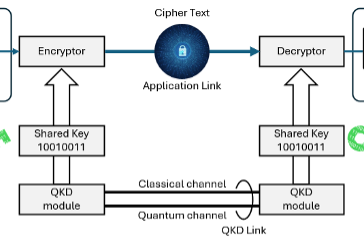数据中心网络中脊柱和叶片收发器之间的光纤连接切换指南
在现代数据中心架构中 脊叶 光纤拓扑因其高性能、冗余性和可扩展性而越来越受欢迎。为了保持网络效率,管理员经常需要在不同网络之间调整或重组光纤连接。 脊柱 和 树叶 交换机。这一过程对于负载平衡、冗余优化或网络升级可能是必要的。有效地重组这些连接需要仔细规划,以避免停机、确保信号完整性和保持极性。
了解脊叶架构
在脊叶网络中,每个叶交换机连接到每个脊交换机,形成一个 非阻塞 这种结构允许任何叶交换机以最小的延迟与任何其他叶交换机进行通信。叶交换机提供与服务器和其他网络设备的连接,而骨干交换机则创建连接叶交换机的高速骨干网。这种架构通过在多条路径上平均分配流量,确保冗余和负载平衡。
调整脊叶连接的原因
出于各种原因,可能有必要在脊柱收发器和叶子收发器之间建立连接:
- 负载平衡:将网络流量平均分配到可用路径上,可以防止出现瓶颈并提高整体性能。
- 网络升级:在升级过程中,管理员可能需要重新安排连接,以安装新的收发器或升级光纤电缆。
- 冗余优化:通过重新安排连接来增加冗余,可以降低单点故障的风险。
- 维护和修理:如果某些光纤连接或收发器需要维护,重新洗牌可在维修过程中提供持续连接。
为光纤连接洗牌做准备
在调整光纤连接之前,网络管理员应该
- 绘制连接图:记录脊柱交换机和叶子交换机之间现有的光纤连接,以了解当前的布局。
- 负载平衡和冗余计划:决定如何重组连接,以实现负载平衡和冗余目标。
- 给电缆和端口贴标签:清楚地标注电缆和端口,避免在重新安排过程中发生混淆。这在多条电缆连接到单个交换机的高密度环境中尤为重要。
- 验证极性和兼容性:确保所有收发器和电缆兼容,并符合极性要求,以保持正确的信号流。
调整光纤连接的步骤
请按照以下步骤安全有效地在脊柱和叶子收发器之间切换光纤连接:
- 断开现有连接
- 轻轻断开收发器上的光纤连接器,注意不要损坏连接器或电缆。
- 对连接器和收发器使用保护帽,以防止污染并保持信号完整性。
- 验证收发器健康状况
- 检查每个收发器是否有灰尘或损坏。使用光纤检查镜检查连接器的清洁度。
- 必要时使用适当的清洁工具或无绒毛棉签和光纤清洁液清洁收发器和光纤连接器。
- 重组光纤连接
- 按照计划的拓扑结构重新洗牌连接,确保每个叶子交换机都能连接到所有脊柱交换机。
- 考虑将高需求的叶子交换机与更大容量的主干收发器配对使用,或使用彩色编码电缆来区分不同的连接,以便将来更容易识别。
- 确认极性和对齐
- 通过验证收发器的发送(Tx)和接收(Rx)路径是否正确对齐,确保极性正确。这对保持数据完整性和避免连接问题至关重要。
- 使用现场极性可逆的 LC 双工连接器或指定极性对齐的 MPO/MTP 电缆可简化这一过程。
- 测试新连接
- 重新建立连接后,使用信号分析仪测试每个链路的信号完整性。 光源和功率计 或 光学时域反射仪(OTDR).
- 检查是否有任何信号丢失或连接问题,必要时重新固定连接器。测试数据包流量,确认重新洗牌后的连接是否按预期运行。
- 监控网络性能
- 洗牌后,监控网络流量和性能指标,确保实现负载平衡和冗余目标。
- 利用网络监控工具,确定新安排可能导致的任何潜在拥堵或不平衡。
高效脊叶光纤重组的最佳实践
要保持重新洗牌的效率和无差错,请遵循以下最佳实践:
- 文件更改:更新网络图和文件,以反映新的配置。准确的文档资料对今后的维护或更多的调整非常有价值。
- 在非高峰时段制定计划:在可能的情况下,尽可能在非高峰时段分流连接,以尽量减少对网络用户的影响。
- 使用预端接电缆:预端接光缆尤其适用于高密度环境,无需现场端接即可实现快速可靠的连接。
- 培训员工:确保团队成员接受过光纤处理方面的培训,并了解脊叶网络的架构。这可以降低在洗牌过程中出现错误的风险。
结语
在脊柱和叶子收发器之间重组光纤连接是保持脊柱-叶子网络性能和弹性的关键任务。通过采用系统化的方法、确保正确的极性和确定文档的优先级,管理员可以有效地管理网络资源、改善负载平衡并保持最佳的连接性。随着数据中心需求的不断增长,有效的光纤管理方法对于确保可靠和可扩展的网络性能至关重要。


